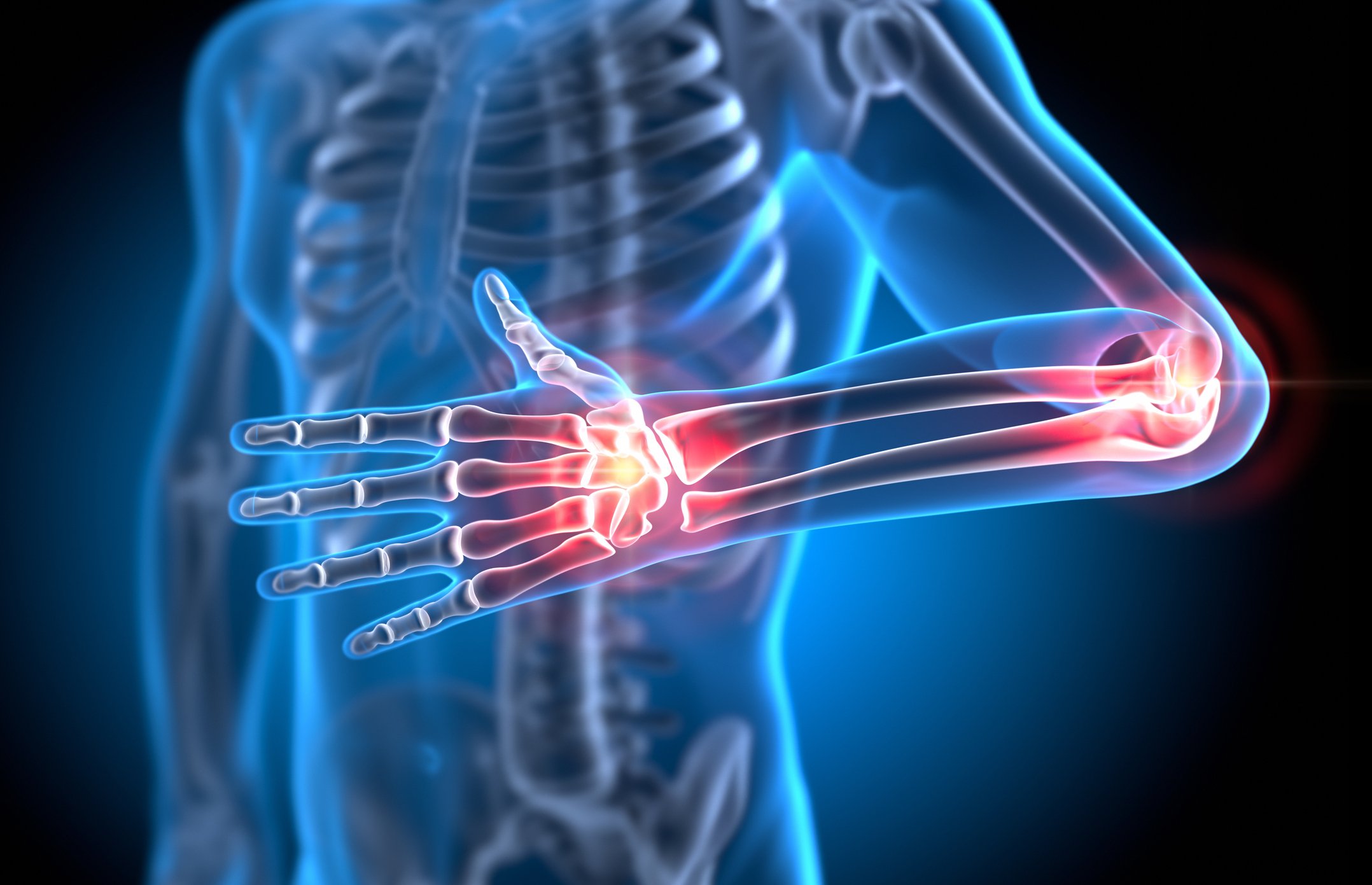
THE ELBOW
The elbow is a complex hinge joint formed where three bones meet: the humerus (upper arm bone), the radius, and the ulna (forearm bones). This joint allows for flexion, extension, and rotational movements of the arm. It is supported by ligaments, tendons, and muscles, making it a highly functional and essential joint for daily activities. The primary ligaments include the ulnar collateral ligament (UCL) and radial collateral ligament (RCL), which stabilize the joint during motion, while tendons connect muscles to bones to enable movement. Cartilage within the joint facilitates smooth motion by reducing friction between the bones.
Injuries to the elbow can result from trauma, overuse, or degenerative conditions such as arthritis. Common elbow conditions include fractures, dislocations, ligament tears (such as UCL injuries), and tendinitis (commonly referred to as tennis or golfer’s elbow). Treatment for elbow injuries can range from conservative approaches, such as physical therapy and medication, to more advanced interventions like arthroscopy, ligament reconstruction, or joint replacement. Orthopedic surgeons specializing in elbow care provide personalized treatment plans to restore function and alleviate pain, helping patients return to their daily activities or athletic performance.
Some of the most common Elbow conditions include:
Tennis Elbow (Lateral Epicondylitis)
Golfer’s Elbow (Medial Epicondylitis
Elbow Fractures
Elbow Dislocation
Ulnar Collateral Ligament (UCL) Injury
Olecranon Bursitis
Cubital Tunnel Syndrome
Distal Biceps Tendon Rupture
Osteoarthritis of the Elbow
Elbow Sprains
COMMON CONDITIONS
ELBOW FRACTURE
Elbow fractures occur when one or more of the bones that form the elbow joint—the humerus, radius, or ulna—break, typically as a result of trauma such as a fall, direct impact, or an accident. These fractures can vary in severity, ranging from small hairline cracks to complete breaks, and may involve displaced or non-displaced fragments. Symptoms include intense pain, swelling, bruising, and an inability to move the elbow joint normally. In severe cases, deformity may be visible. Diagnosis is confirmed through physical examination and imaging tests, such as X-rays or CT scans. Treatment depends on the type and severity of the fracture and may involve immobilization with a cast or splint, or surgical intervention to realign and stabilize the bones using pins, plates, or screws. Early treatment and rehabilitation are crucial to restoring function and preventing complications such as stiffness or arthritis in the elbow.
Tennis Elbow
Tennis elbow, or lateral epicondylitis, is a condition characterized by inflammation or irritation of the tendons that attach to the lateral epicondyle, a bony prominence on the outer part of the elbow. This condition typically arises from repetitive overuse of the forearm muscles, particularly those used in gripping, lifting, or wrist extension. While it's commonly associated with racquet sports like tennis, it can also occur in individuals who perform repetitive motions in activities such as painting, carpentry, or typing. Symptoms include pain and tenderness on the outer elbow, which may radiate into the forearm and worsen with movement. Treatment for tennis elbow often involves rest, physical therapy, anti-inflammatory medications, and in severe cases, injections or surgical intervention may be considered to relieve symptoms and promote healing.
COMMON PROCEDURES
ELBOW ARTHROSCOPY
Elbow arthroscopy is a minimally invasive surgical procedure used to diagnose and treat various conditions within the elbow joint. During the procedure, small incisions are made around the elbow, and a tiny camera called an arthroscope is inserted to visualize the internal structures. This allows the surgeon to see inside the joint without making a large incision. Arthroscopy is commonly used to treat conditions such as osteoarthritis, loose bodies (fragments of bone or cartilage), and inflammation of the joint lining (synovitis). It can also help repair soft tissue injuries, such as torn cartilage or tendons.
Because it is minimally invasive, elbow arthroscopy generally results in quicker recovery times and less postoperative pain compared to traditional open surgery. Patients typically experience less scarring, reduced risk of complications, and shorter hospital stays. After surgery, physical therapy is often recommended to restore mobility and strength. The success of the procedure largely depends on the condition being treated and the patient’s adherence to rehabilitation protocols
Ulnar Collateral Ligament (UCL) Reconstruction
Ulnar Collateral Ligament (UCL) reconstruction, commonly referred to as Tommy John surgery, is a procedure that repairs a torn or damaged UCL, which is a crucial stabilizing ligament on the inner side of the elbow. This injury is most common among athletes who engage in repetitive overhead throwing motions, such as baseball pitchers. During the procedure, the surgeon replaces the damaged UCL with a tendon graft, typically harvested from the patient’s own body (e.g., from the forearm or hamstring) or from a donor. The new ligament is then anchored into the elbow bones to restore stability and function.
Recovery from UCL reconstruction can be lengthy, with athletes often requiring 12-18 months before returning to full competition. The postoperative rehabilitation process is critical and involves physical therapy to regain range of motion, strength, and coordination. While the procedure is highly successful in restoring elbow stability and enabling patients to return to sports, a full recovery requires strict adherence to rehab protocols and gradual return to activity under medical supervision.
